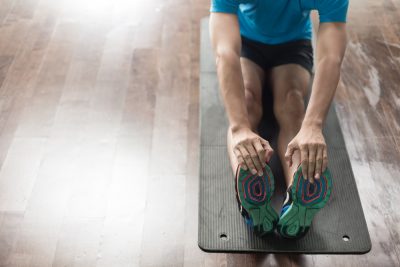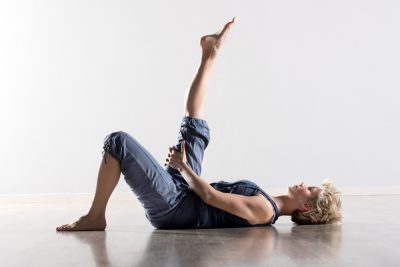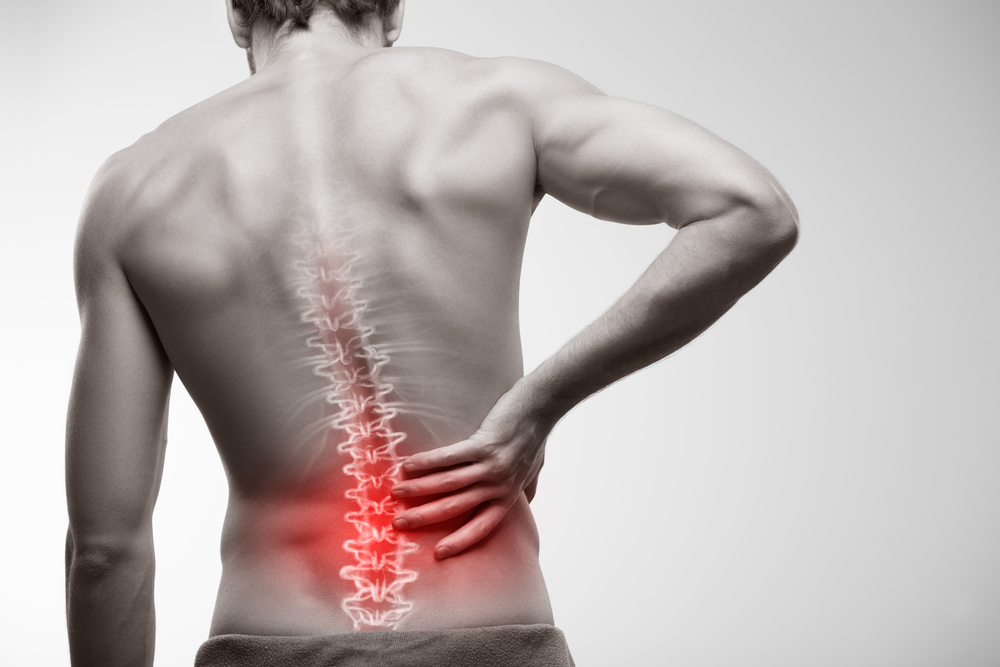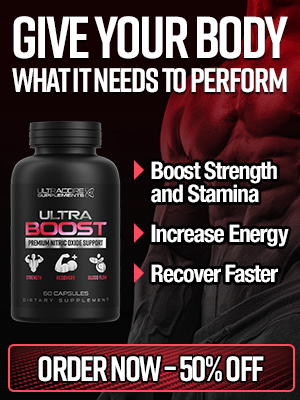You may want to engage in daily workouts but can’t if you have severe back pain, as this can make you lose focus on just about anything. But with few back stretches, you can get a noticeable relief.
Muscle strains or spasms can cause back pain, but in the end, it still leads to the same thing – debilitating pain that can disrupt your day.
Back pain can sometimes be so severe that people end up seeking medical intervention or heavy pain killers when, in reality, all you need to do is engage yourself in a few back stretches and exercises.
Back pain can be avoided by doing regular stretches and exercises, so the muscles which support the spine can remain firm and flexible.
A research showed that people who had back pain, engaged in a 12-week stretching program, and at the end, they all reported to have less back pain and an increased back functionality.
So, obviously, stretching is a natural and effective way to get rid of back pain.
Benefits of Back Stretches
- Alleviating tension in the muscles that aid the spine. When there is tension on these muscles, it can cause back pain or even worsen pain from any back pain problems.
- It reduces your risk of developing any disability as a result of back pain.
- Strengthens your range of movement and general mobility
When back pain prolongs for more than three months, you may require several weeks of regular stretching before you feel any noticeable relief.
But the question is, “why is it so effective, and which back stretches should you be doing?” Also, “what is the best way to ad back stretches to your workout regime, so it can be effective?”
Before we discuss the specific back stretches that can help strengthen your core and prevent back pain, let’s discuss why back stretching is important in treating back pain.
Why Does Stretching Relief Back Pain?
When you stretch regularly, it helps to loosen your muscles and eliminate back pain while strengthening your back at the same time.
The regular movement would also help reduce your risk of having back pain in the future. Doing frequent stretching of your legs and back would help improve your flexibility for daily functions.
For instance, if you are flexible, lifting objects from the ground would not add tension to your back, and it can increase back resilience.
 This means that you can engage in strenuous activities without having to feel any back pain afterward.
This means that you can engage in strenuous activities without having to feel any back pain afterward.
Stretching is a two-way punch for alleviating back pain; if you are experiencing back pain, it can quickly help you get in shape.
And when you include stretches in your workout program, it strengthens your core, reducing your risk of having injuries or chronic pain. Regular stretching is the ultimate when it comes to back pain relief.
Now that we have established why back stretching is important for treating and preventing back pain, let’s talk about how the types of back stretches, you should incorporate into your workout routine.
Types of Back Stretches
Trunk Rotation Stretch
How to:
You can begin by lying flat on your back on a mat, with your knees slightly curved.
Keep rotating your legs to the floor until you feel a stretch, and once you do then switch to the other side. Make sure to hold each stretch for about 10 seconds, and then repeat it ten times.
This stretch would work on your spine and increase your mobility, while still easing your trunk’s muscles.
Cat-Camel Back Stretch
How to:
Bend on all fours and curve your back to the ceiling and maintain that position. Curve your back inwards to the floor and maintain position. Ensure you hold each stretch for about 10 seconds and repeat ten times.
This stretch strengthens the back directly and the abdominal muscles, and increases your spine mobility.
Knee to Chest Stretch
How to:
You should start by lying flat on your back with your knees curved and feet flatly pressed on the floor. Rest your hand on your knee or a bit further down from your kneecaps.
Gently bring your knees to your chest, and use your hands as the pull, but don’t tug your knees to fast or hard.
Hold that position for about 30 seconds and move your hips from side to side, up and down, this helps massage the lower back. Move back to the starting position and repeat the process ten times.
The essence of this stretch is to pull out the contracted muscles in your lower back.
Hip Flexor Stretch
How to:
Start by kneeling on a mat. Bend forward to the curved stretched-out knee, until you notice a pull in the second thigh. Maintain this position for about 10 seconds and repeat ten times.
When you sit for too long, your front hips get firm, and this would result in the hips muscles to drag the lower back ahead when standing.
This move makes the lower back receive more tension, and when there is an increase in the flexibility of the hip flexors, there would be less back pain when you are performing activities that require you to stand.
Hamstring Stretch
How to:
You should sit on the floor with one leg straight and the other bent.
With your back straight, bend forward by pivoting from the hips until you feel a stretch in the other thigh, and then do the same process for the other leg. Maintain each stretch for about 10 seconds and repeat 10 times.
Because too much sitting makes the back of your legs firm, your back would feel a pull when you bend forward. When your hamstrings are flexible, there would be reduced tension on the back when you lift heavy objects.
The Pelvic Tilt
How to:
Start by lying on a mat with your knees curved and feet flatly pressed on the floor. Relax your lower back by maintaining a neutral position.
To know if you are doing this right, you should feel a little curve in your lower back when you put the top of your hand underneath your back.
Proceed to trigger your core muscles and level your lower back to the floor by raising your pelvis slightly. Move back to the starting position and repeat the process ten times.
When you are experiencing lower back pain, it might be impossible to move your entire pelvic area. Engaging in the pelvic tilt stretch can gradually help your move this area.
Child’s Pose
How to:
Bend on all fours and push your hips backward. In this position, push out your arms forward until you feel a soft stretch; be careful, so you don’t overstress and strain your muscles. Maintain the stretch for about 10 seconds and repeat 10 times.
When doing this particular stretching exercise, the muscles of your lower back becomes relaxed and improves your spine mobility.
Supine Figure 4 Stretch
How to:
 Start by lying on a yoga mat with your knees bent and firmly pressed on the floor. Raise your right leg, rotate your right foot, and then drape it over your left thigh.
Start by lying on a yoga mat with your knees bent and firmly pressed on the floor. Raise your right leg, rotate your right foot, and then drape it over your left thigh.
If you feel comfortable, then hold the position, or you can pull your left knee in and hold it at the back of your left thigh to increase the tension. Hold this position for about 30 seconds and repeat the process with the other leg.
This yoga pose opens up the hips and massages your lower back as well. Because this exercise focuses on the piriformis and outer glutes, it can help loosen a stiff lower back.
Cow-Face Pose
How to:
Start this stretch from a seated position, put your left heel to your right glute, and make sure your left knee is positioned directly to you.
Place your right leg above your left, and heap your knees together so it can face straight. Don’t stress your muscles, if you are unable to stack one knee on top of the other.
But ensure that your feet are on either side of you with your toes pointing directly at you. Sit tall, so your spine isn’t bent, but you can add a slight forward bend to add to the intensity.
This stretch helps to loosen the outer glutes, as it can lead to low back pain when they are tense.
Tips for Back Stretches to Alleviate Back Pain
- Stretching isn’t a painful process, so you shouldn’t bend your body in a way whereby you get to feel pain or place your body in an awkward position
- Do not try to rush your stretching workouts, stretch just one side of your body at a go
- Wear clothes that would not bind your movements, because you must flex your muscles without constriction
- Stretch your body in a slow rhythm, and avoid bouncing, so you don’t strain your muscles
- Stretch in an open space that is clean and flat so that you can move about freely
- Do your stretches for like five times at a session, because it takes about four repetitions for your muscles to reach its limit of elongation








COMMENTS